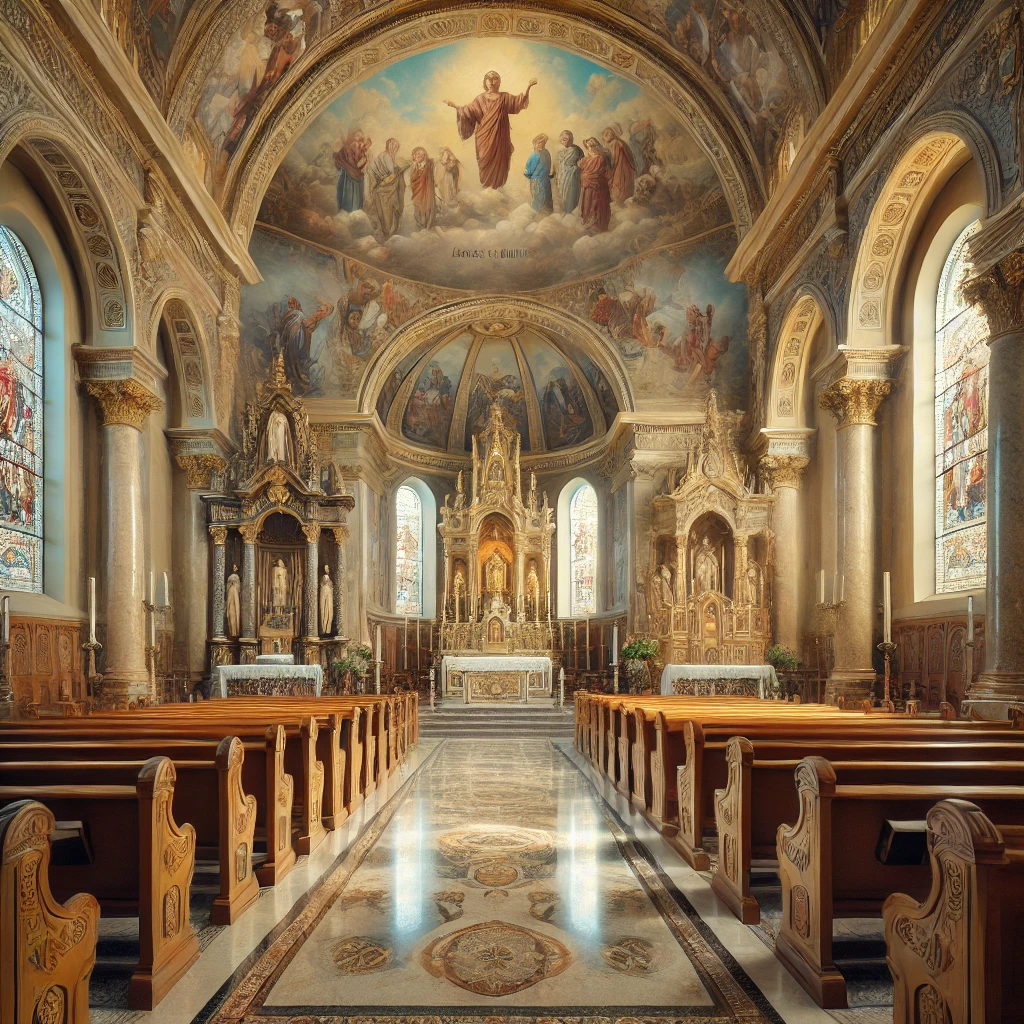The Sacred Synergy of Art and Architecture: Elevating Churches and Oratories
- Kenneth Shane
- Jun 18, 2024
- 2 min read
Updated: Feb 11
For centuries, art and architecture have worked in harmony to create sacred spaces that uplift the human spirit and inspire devotion. From the soaring ceilings of classical architecture to the intricate beauty of stained glass, mosaics, and sculptures, sacred art plays a vital role in transforming a building into a place of worship. When thoughtfully integrated, art in sacred spaces enhances the sense of the divine, making churches and oratories feel truly transcendent.
At Shane Arts, LLC, we understand that designing sacred spaces is about more than just structure—it’s about creating an atmosphere of reverence, awe, and spiritual connection. By blending architecture with sacred artistic elements, we help craft churches and oratories that stand as timeless testaments to faith.
How Art Enhances Sacred Architecture
1. Stained Glass: Illuminating the Divine
Stained glass windows have been a hallmark of sacred architecture for centuries, filling spaces with ethereal light that symbolizes the presence of the divine. The interplay of light and color creates a spiritual ambiance, while biblical scenes depicted in glass serve as visual catechesis, teaching and inspiring worshippers.
2. Sculpture: Embodying the Sacred
From statues of saints to intricately carved altars, sculpture adds depth and presence to sacred spaces. Whether in marble, wood, or bronze, these works of art invite reflection, prayer, and connection to the faith. Architectural details such as wrought iron or brass railings further contribute to the sense of reverence.
3. Mosaics: A Legacy of Sacred Beauty
Incorporating mosaics into a church or oratory brings an ancient artistic tradition into a sacred setting. Byzantine and Romanesque churches often feature breathtaking mosaics depicting Christ, the Virgin Mary, and saints, reinforcing the theological and aesthetic richness of the space.
4. Paintings and Frescoes: Visual Storytelling in Worship
From the Renaissance masters to contemporary sacred artists, paintings and frescoes have long adorned churches and oratories, illustrating biblical narratives and theological truths. Whether placed above an altar or along a vaulted ceiling, sacred paintings provide worshippers with an experience of heavenly beauty.
5. Architectural Ornamentation: Elevating the Worship Experience
Beyond traditional artwork, architectural details—such as ornate woodwork, wrought iron gates, or brass candle stands—further enhance the sacredness of a space. The craftsmanship in these elements reflects devotion and reverence, enriching the overall experience of worship.
The Role of Art in Creating a Sense of the Sacred
Sacred architecture should lift the soul toward God. Integrating religious design elements into a church or oratory accomplishes this by:
Fostering Reverence: Beautiful sacred art naturally inspires awe and devotion.
Enhancing Worship: Thoughtfully placed artwork focuses attention on the altar and liturgical elements.
Telling a Story: Sacred imagery serves as a visual representation of faith and salvation history.
Creating a Timeless Atmosphere: Architecture combined with classic artistic elements ensures a church or oratory remains a beacon of beauty for generations.
Designing Timeless Sacred Spaces
At Shane Arts, LLC, we specialize in designing churches and oratories that honor sacred traditions while embracing timeless beauty. Whether through stained glass, mosaics, sculpture, or wrought iron details, we believe that sacred spaces should reflect the glory of faith in the richness of beautiful architecture.
Are you looking to design or restore a sacred space? Contact Shane Arts, LLC today and let’s create a church or oratory that stands as a testament to faith, beauty, and divine inspiration.








Comments